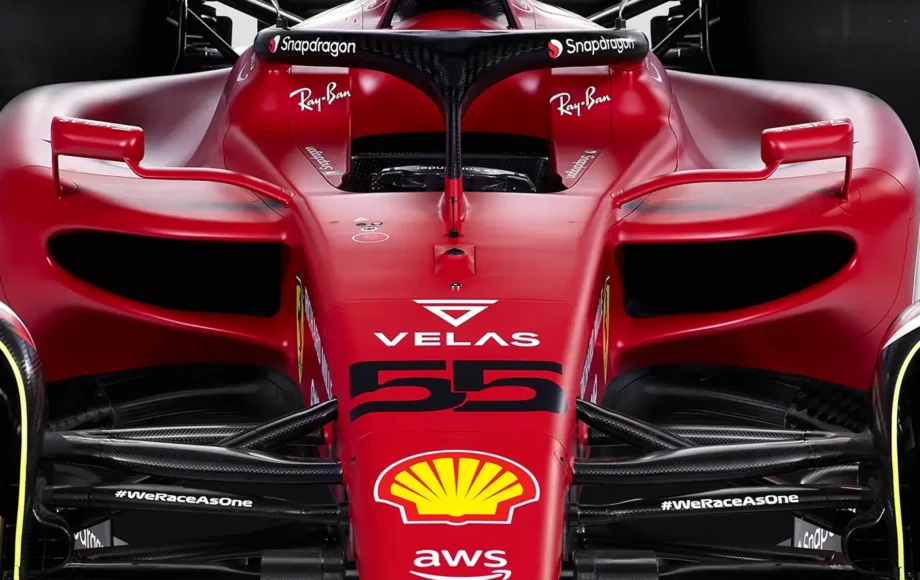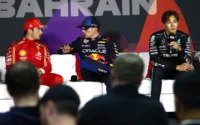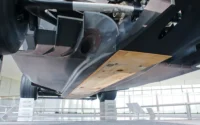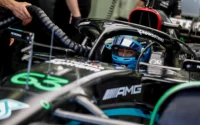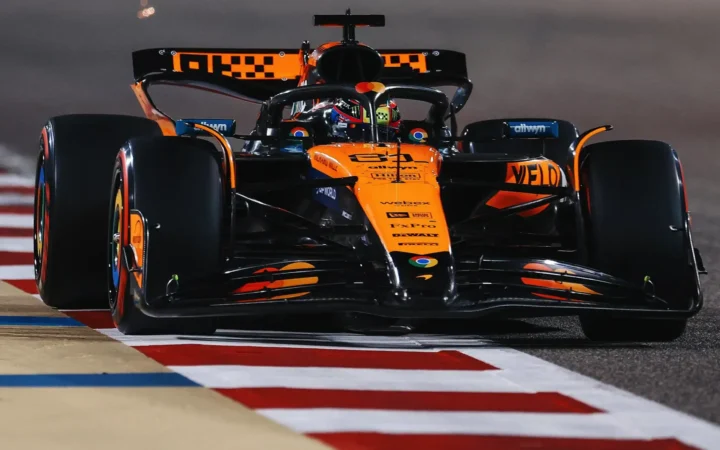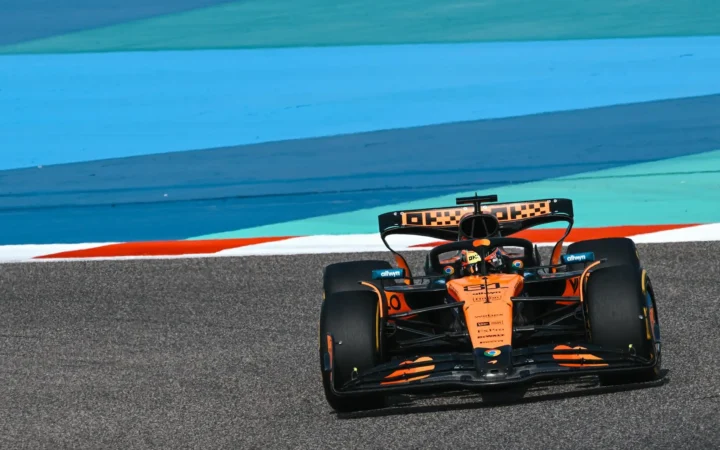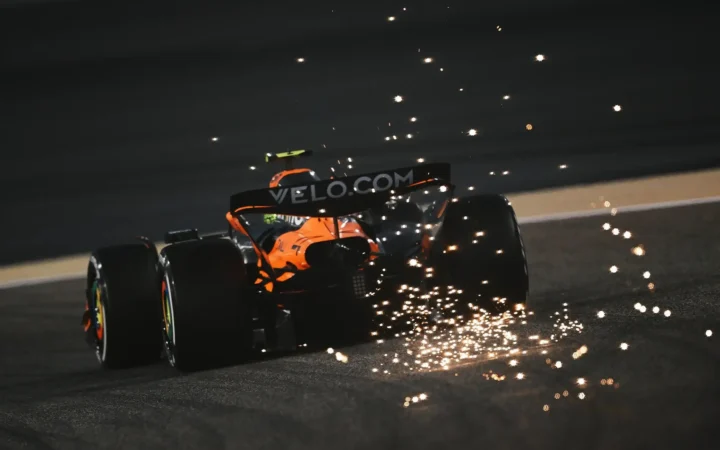Sidepods are positioned on each side of an F1 car and play a pivotal role in aerodynamics and cooling. Meticulously engineered, they are designed to optimise airflow around the car to minimise drag, increase the car’s speed and improve its handling.
What to know
- In the earlier years of F1, cars featured high sidepods that channelled air towards the rear wing to create downforce.
- Today, the sidepod’s primary function is to manage airflow around the car, cool the engine, minimise drag, and work with the floor for downforce.
- In 2022, F1 saw various shaped sidepod designs, particularly from Ferrari and Mercedes, after the FIA significantly changed its rules.
In the sport’s earlier years, cars featured noticeably high sidepods that channelled air towards the rear wing to increase downforce and stability. However, as aerodynamic understanding and technology advanced, the trend shifted towards designing lower sidepods. This modern design approach improves the car’s overall aerodynamic performance by significantly reducing drag, leading to faster and more efficient cars.
What are sidepods on a F1 car?
Sidepods are an essential aerodynamic feature that are elongated areas of bodywork on both sides of the car, stretching from the driver’s cockpit area to the rear wheels. As with anything on the external surface of an F1 car, they will work together with other areas like the car’s floor to manage airflow, minimise drag and hopefully increase the car’s straight-line speed and corning.
Beyond their vital role in aerodynamics, sidepods will also house the car’s radiators. These radiators are designed to cool the engine and other vital components that sit under the car’s bodywork to ensure they operate efficiently under the intense conditions of a race. Effective heat management helps to maintain the performance and reliability of an F1 car throughout the duration of a race to prevent engines from overheating. Without this, a race can be ended by engine failure, forcing a team to withdraw their car and driver from the race. Teams often introduce large cuts or vents across the top of the side pods designed to enhance this cooling at hotter races on the calendar.
Given their critical impact on performance, sidepods are governed by regulations set by F1 and the FIA. These regulations cover items such as the size, shape, and placement of side pods. These rules also have specific restrictions on using extra aerodynamic elements, so extra wings can’t be placed on sidepods, for example. These rules are in place to ensure a level playing field across the grid, promoting fair competition between the teams that will often try and push the boundaries of what is allowed.
Evolution of sidepods in F1
When sidepods were first introduced, they featured a high design, but as time progressed, F1 designers began exploring the benefits of lower side pods. This shift, which started gaining momentum in the 1980s, was motivated by teams understanding that reducing the drag on a car was the key to boosting a car’s speed and handling.
In the 1980s, Formula One was a hotbed of innovation and technological advancement, and this was reflected in the design of sidepods on the race cars of that era.
The 1980s saw a significant shift in Formula One towards optimising aerodynamics. Sidepods were designed to manage airflow more effectively around the car. This included shaping the sidepods to direct air towards the rear wing and underbody to increase downforce and stability at high speeds.
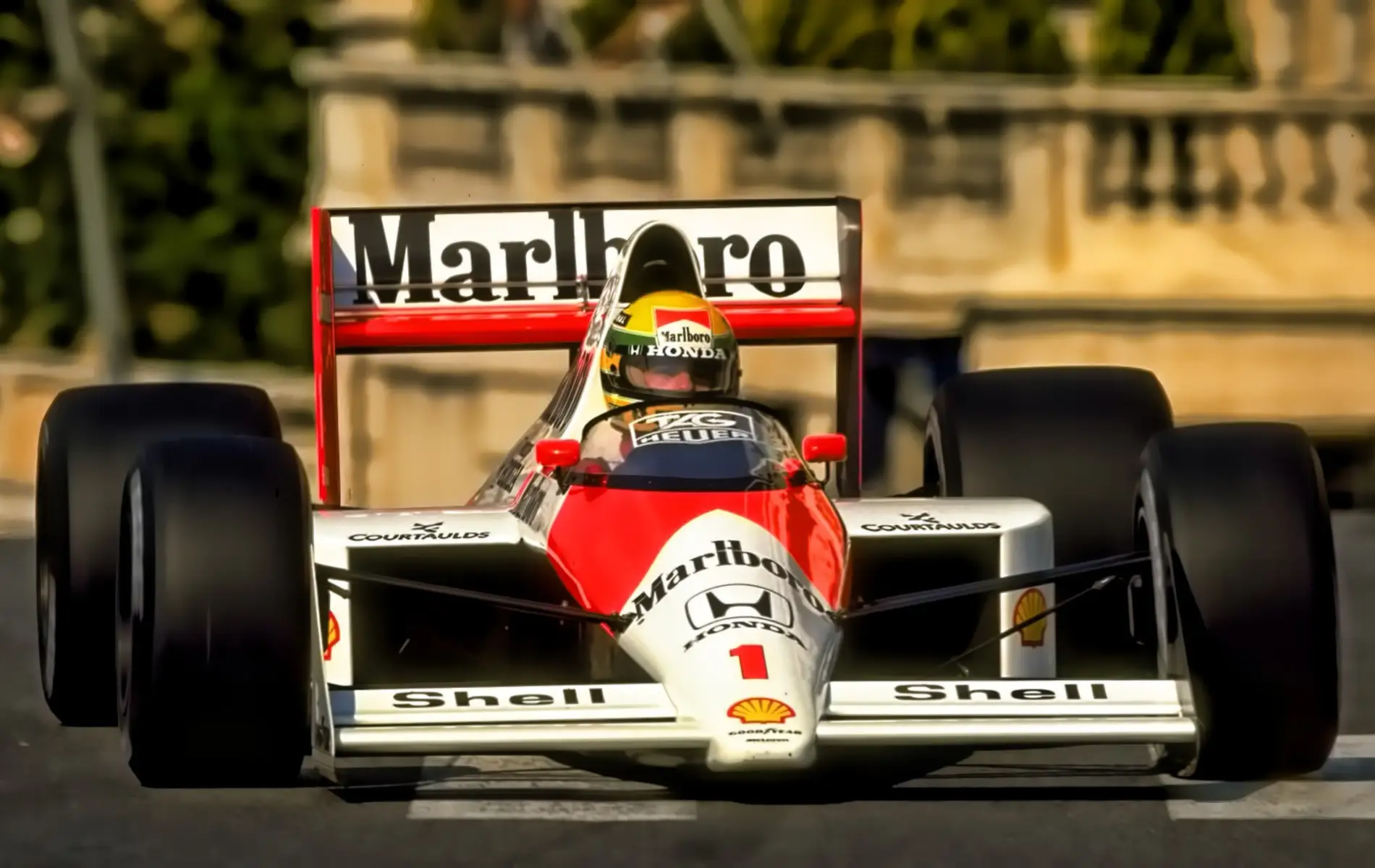
A major part of the early 1980s was the ‘ground effect’ era, where sidepods worked with the car floor designed with venturi tunnels underneath. These tunnels created a low-pressure area under the car, effectively ‘sucking’ it to the ground, resulting in tremendous downforce and faster cornering speeds. However, as the cars became faster and faster, the ground effect idea was curtailed in 1983 for safety reasons.
The 1980s was also the era of turbocharged engines in F1. These engines generated a lot of heat, requiring efficient cooling systems. Consequently, sidepods were often larger to accommodate bigger and more effective radiators and intercoolers to keep the engine temperatures in check.
The materials and construction techniques used in sidepod design at this time also evolved during the decade. There was a gradual shift in what was used to build an F1 car to more advanced composites, which allowed for more aerodynamic shapes and lighter yet stronger structures.
Towards the late 1980s, through the 1990s and 2000s, safety became more of a concern in F1. This has been reflected in the design of sidepods, which have gradually incorporated better and better safety features to protect drivers in the event of a side impact.
Different types of sidepods that are used in Formula 1
In 2022, Formula One introduced revamped rules that pushed for new ground-effect cars to aid in overtaking. The rule change resulted in various sidepod designs among the teams, notably the ‘wide-pods’ of Ferrari and the ‘zero-pod’ concept from Mercedes.
These variations on the sidepod design displayed the vastly different directions their aerodynamic teams took when understanding the 2022 rule book.
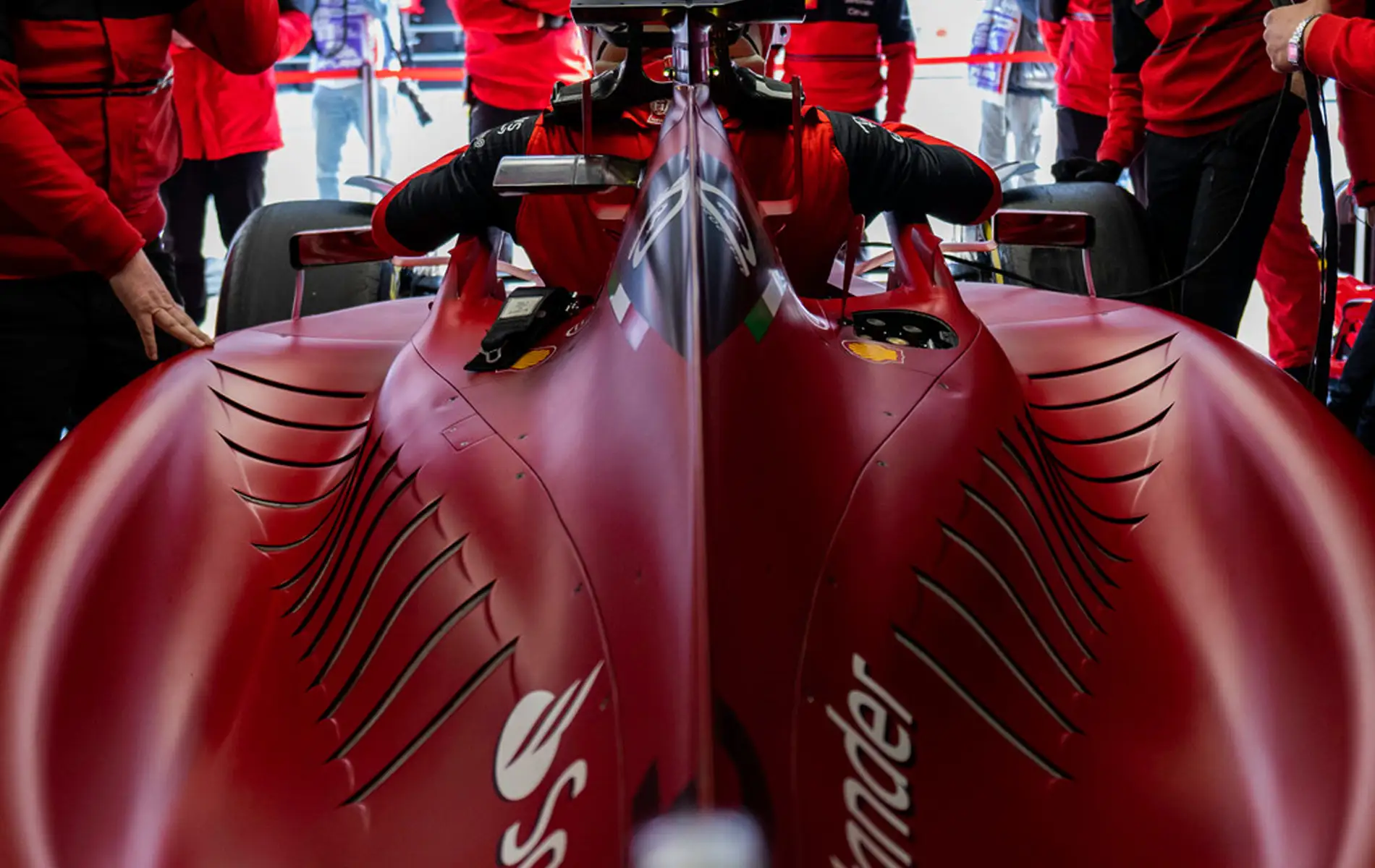
Ferrari’s ‘Wide-Pods’ design
With a wider surface area, Ferrari wanted better control over the airflow, directing it more around the car. The larger sidepods could also house bigger and more effective cooling systems for better engine performance, but with wider sidepods, there is a tradeoff with weight, impacting weight savings that could be made in other areas of the car.
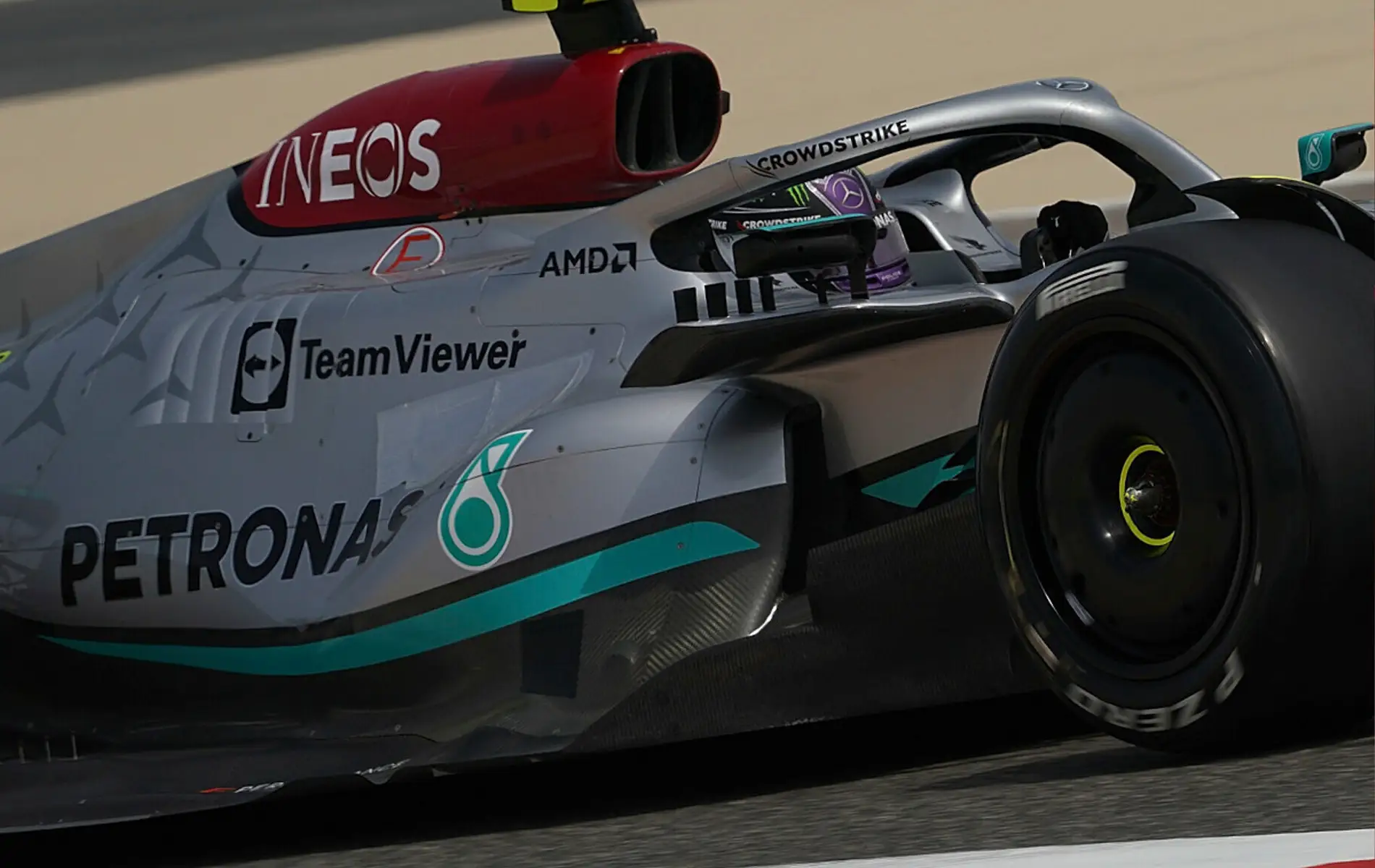
Mercedes’ Zero-Pod design
Mercedes’s approach was drastic, unseen before in F1. The slim zero-pod design was aimed at minimising drag to increase the cars top speed and overall downforce efficiency. A more compact design certainly reduced the car’s overall weight, while the streamlined shape offered more precise control over the car’s airflow but with a smaller area for radiators, Meredes had to be innovative with the cooling design.
As the 2022 season progressed into the 2023 season, both teams continued to adapt and refine their approaches. Eventually, both teams abandoned their ideas, proving that there is generally a single best way of aero efficiency and that a team can’t stand still when other teams around them are continually evolving and improving.
Mercedes’ Zero-Pod design failure
However radical the Mercedes’ ‘zero-pod’ design was, the innovative approach soon proved to be the team’s downfall. After the most dominant run in F1 history their radical approach to their sidepod configuration ended the team’s winning ways, and they faced challenges from the off.
The primary intent behind the zero-pod design was to reduce drag and enhance aerodynamics. However, achieving the desired airflow behaviour around the car’s sides and floor proved more complex than anticipated. The car struggled with getting the air to flow as efficiently as needed, especially under different racing conditions.
The smaller sidepods posed challenges in engine cooling because of the reduced space for radiators and cooling systems, compromising the car’s ability to keep components at optimal temperatures during a race. In some race conditions, Lewis Hamilton and George Russell had to compromise their races to cool their cars by lifting and coasting into corners and moving out of the slipstream of cars in front.
The unique design of the zero-pods led to unpredictable handling, particularly at different speeds and track conditions. Drivers found the car more challenging to control, affecting their performance during races.
Introducing such a radical design and understanding and refining the zero-pod concept to suit various tracks and conditions took significant time and resources, possibly more than feasible within a competitive racing season. The team couldn’t run the car as close to the ground as simulated and had to increase the ride height to prevent the dramatic porpoising they were suffering. Porpoising happens when you can’t control what the downforce does to the airflow under your car.
Most of the other teams on the grid went for a more common approach, will there were differences, most teams had developed cars better suited to the 2022 regulations, in particular Red Bull, making the zero-pod design appear less effective in comparison. Mercedes abandoned the concept in 2023, reverting to a more traditional approach with a completely new concept in 2024.
Performance, Compliance, and Controversy
A key challenge for teams is striking the right balance between performance and following the sport’s constantly evolving technical regulations. Over the years, teams have used components like shark fins and T-wings crossing the line between design innovation and the spirit of competition.
In 2022, the Mercedes W13 included wing mirrors mounted on the Side Impact Protection system and part of the sidepod. According to Ferrari’s Mattia Binotto, these were strategically designed to serve as an aerodynamic-enhancement to the vehicle, adding a functional element to what is typically considered a standard safety feature.
Others argued that this approach deviated from the intended spirit and purpose of the sport, even if the design didn’t explicitly violate any rules. In the end, the FIA found no issues with the design.
Despite these challenges and the occasional controversies, sidepods continue to be a major talking point in the paddock at the start of a season and throughout. The teams that get it right will visit the podium more often than those who get it very wrong.
Seen in:

